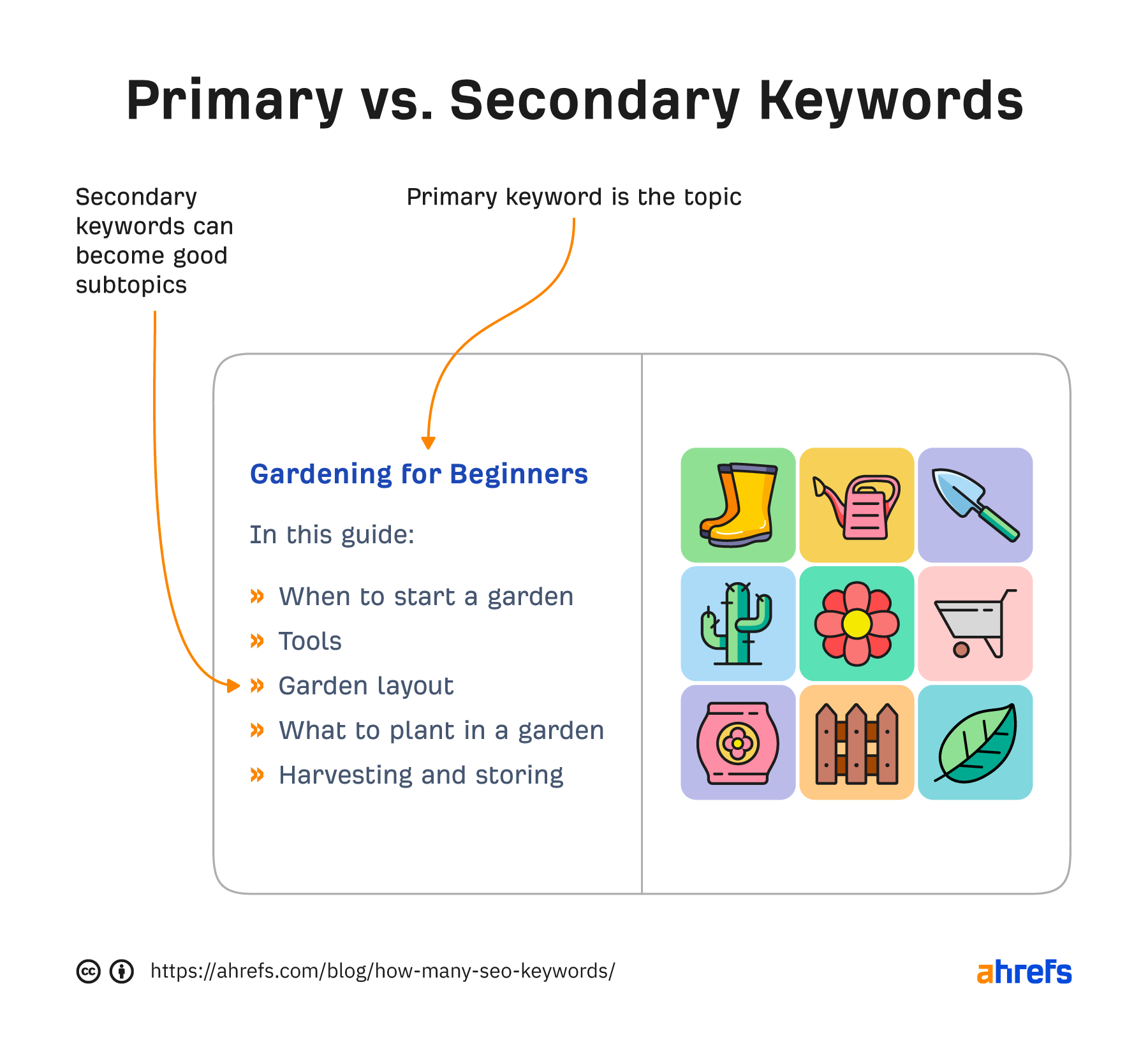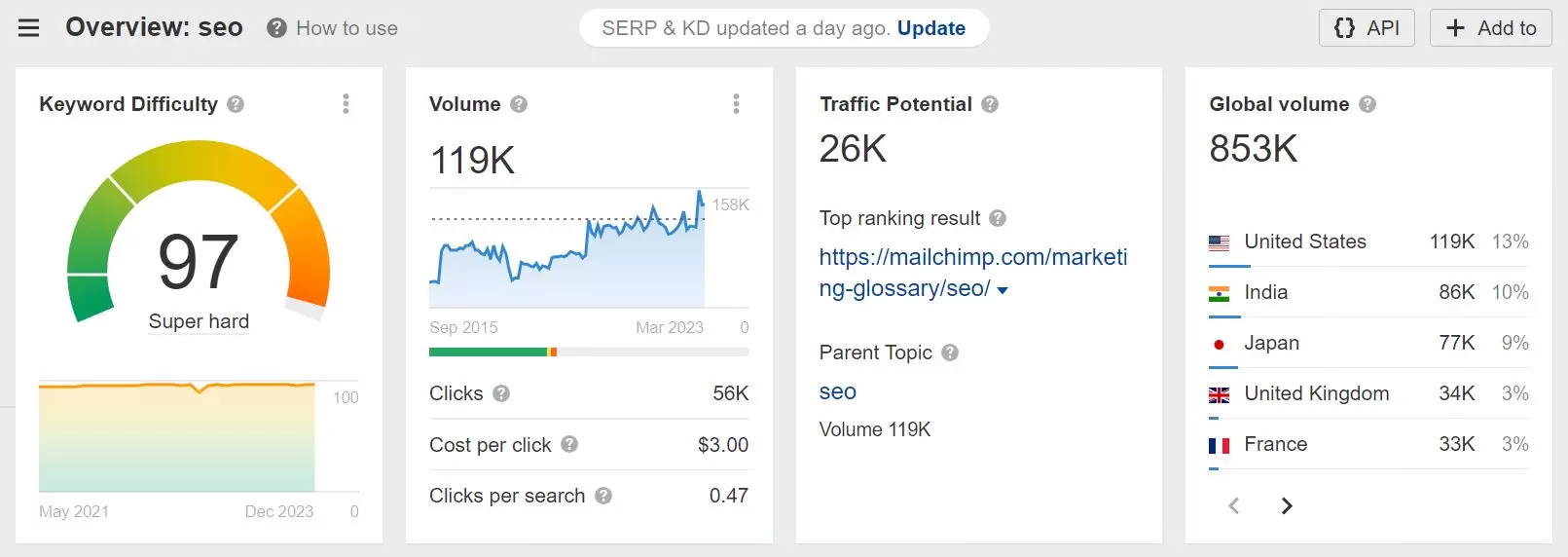Keyword strategy is crucial for the success of both organic and paid search campaigns. Deciding which primary keywords to target for advertising and how to optimize for organic search results through SEO are key factors that can determine the success of a campaign.
However, creating a strategy for every possible keyword is nearly impossible. Instead, we need to categorize keywords based on their characteristics, search intent, and search volume, and then develop targeted strategies for each category.
Search engines continuously analyze content across the internet to provide users with the best possible search results. They keep track of nearly all content on every website and webpage in real-time.
What are Primary Keywords and Secondary Keywords?
From an SEO perspective, a primary keyword, also known as a focus keyphrase, is the main term or phrase that a webpage is expected to rank for in search engine results.
In essence, a primary keyword is the main keyword that the page is optimized for. Typically, primary keywords have high search volumes and, if they rank well in the SERPs, can drive significant organic traffic.
On the other hand, secondary keywords add context, value, and depth to the content. These are more closely related to the search intent. Secondary keywords include all keywords that are closely related to the primary keyword being targeted on a page. Synonyms, subtopics, and long-tail keywords can all be considered secondary keywords.
Including secondary keywords in subheaders and body text allows you to cover various aspects of a topic, helping Google better understand the content of the page.
💡SEO Case Study: The Power of Keyword Analysis
From a performance marketing perspective, primary keywords are high-volume terms directly connected to your product or service, often with high CPC and intense competition.
In contrast, secondary keywords usually have lower search volumes, are less directly related to your product, or consist of long-tail keywords made up of two or more words. These generally have lower CPCs and face slightly less competition than primary keywords.
Primary Keywords vs. Secondary Keywords
The relationship between primary and secondary keywords

(Source: Understanding On-Page Search Engine Optimization – SERPninja)
Primary Keywords as the Core of Content Marketing
Primary keywords are the cornerstone of content marketing. For instance, if your company sells yoga clothes, “yoga clothes” might be your primary keyword. This is the term that best represents your market and is also the most frequently searched term related to your business. Therefore, the most crucial aspect of content marketing is to choose the right primary keyword.
Secondary keywords, while related to the primary keyword, are more specific. For example, secondary keywords for “yoga clothes” could include “women’s yoga clothes,” “short-sleeve yoga clothes,” “yoga clothes prices,” “recommended yoga clothes,” and “yoga clothes brands.” These more specific terms are easier to rank for in search engines and often have lower CPCs and less competition in search ads.
Why are Secondary Keywords as Important as Primary Keywords?
Why should you use secondary keywords in content marketing? If you create content targeting high-volume keywords and rank well, you will attract a lot of organic traffic, which seems great for content performance. However, secondary keywords play an equally important role.
For example, imagine that a company writes a high-quality blog article on IT technology, including explanations of technical terms and real-life examples. However, upon analyzing the incoming audience, they find that the article attracted as many students studying the subject as it did industry decision-makers and engineers. While it succeeded in ranking well for a high-volume primary keyword, it also attracted traffic from students who were primarily interested in learning, not buying.
Although organic traffic is generally beneficial, it’s more valuable when it leads to conversions. This relates to search intent. When people search for solutions to problems, they use more specific terms. Returning to the yoga clothes example, someone searching for “yoga clothes” might just be curious about their appearance, but someone searching for “short-sleeve yoga clothes prices” likely has a clear purchasing intent.
Thus, if you only focus on a primary keyword strategy, you may miss out on potential customers with a higher likelihood of conversion. By effectively utilizing secondary keywords, you can attract a more diverse audience, which can significantly improve performance.
Lastly, primary and secondary keywords are closely linked and essential components of your strategy. Primary keywords represent the core of your market, while secondary keywords help capture search intent and attract a broader range of users. By effectively setting and using primary and secondary keywords in content marketing, you can build a more successful marketing strategy.
How to Choose Effective Primary Keywords
When selecting primary keywords, consider four key factors:
Search Volume
High search volume keywords can generate more traffic for your website. Monthly search volume indicates how often users search for a term, showing the popularity of that topic.
Properly ranking your webpage for a keyword can increase its visibility. Low search volume keywords might have less competition, but they also offer fewer opportunities to appear in search results. Finding a balance is essential.
Keyword Difficulty
Choosing a primary keyword with an acceptable level of difficulty maximizes your chances of appearing in search results. Keyword difficulty is often assessed based on the quality of content already ranking for that keyword and the number and quality of backlinks pointing to those pages and domains.
For example, let’s examine the keyword “SEO” using Ahrefs’ Keyword Explorer.
The keyword has a monthly search volume of 119,000 with 56,000 clicks, especially in markets like the U.S., where Google dominates. This high volume explains why English-language documents often rank high even on Korean Google for “SEO.” The keyword difficulty is also very high due to intense competition.
Relevance to Your Target
To use keywords correctly, they must be highly relevant to your business. Well-chosen keywords help your website or blog rank high in search engines and reach more potential customers. If your primary or secondary keywords aren’t relevant to your business, it’s difficult to achieve high rankings. Keywords used in your website or blog posts must align with the content. If they don’t, visitors might leave disappointed, reducing your site traffic.
Regularly reviewing and updating your keywords to match the latest trends is also crucial. As the business environment constantly changes, consistent review is needed to select the right keywords. Additionally, leveraging emerging keywords can help reach more customers.
Search Intent (SERP)
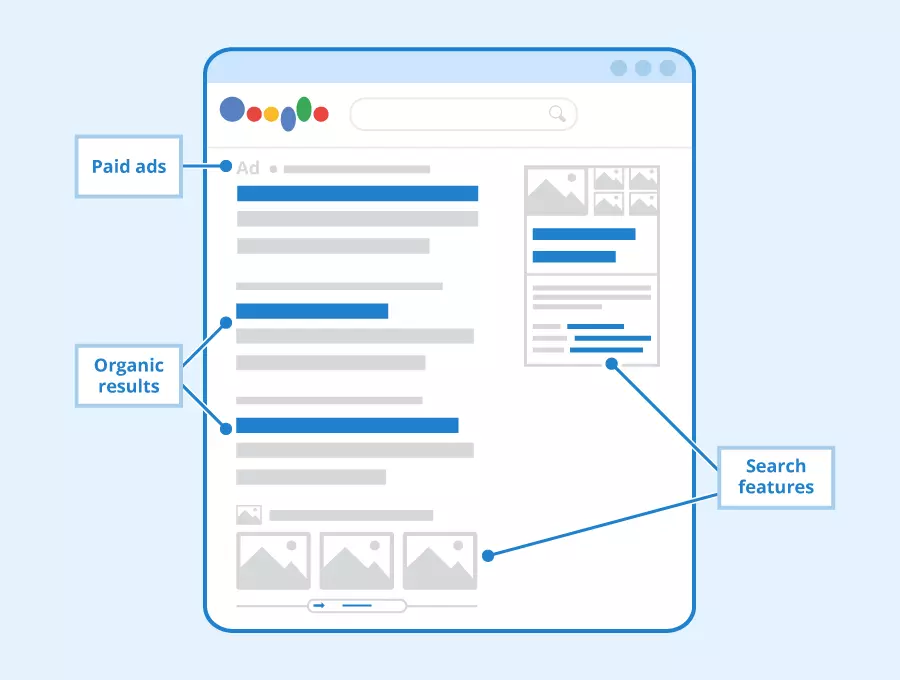
When creating content that includes a primary keyword, first ensure it matches the searcher’s intent and expectations. SERP (Search Engine Results Page) refers to the page displayed when users enter a keyword into a search engine. It lists various websites that help users find the information they seek.
Understanding search intent is vital for both content marketing and SEO. It helps in creating better SEO strategies and producing more relevant content that attracts more visitors. It’s not enough to aim for high rankings; content must also align with the specific keywords users are searching for.
For instance, a search for “travel destination recommendations” might show top-ranking travel websites, but changing the search to “overseas travel recommendations” could yield different results. Understanding and selecting keywords based on search intent is a crucial aspect of SEO and content marketing.
How to Find Secondary Keywords
Autocomplete Suggestions
Even if secondary keywords have lower search volumes than primary keywords, they can be highly effective in targeting specific audiences.
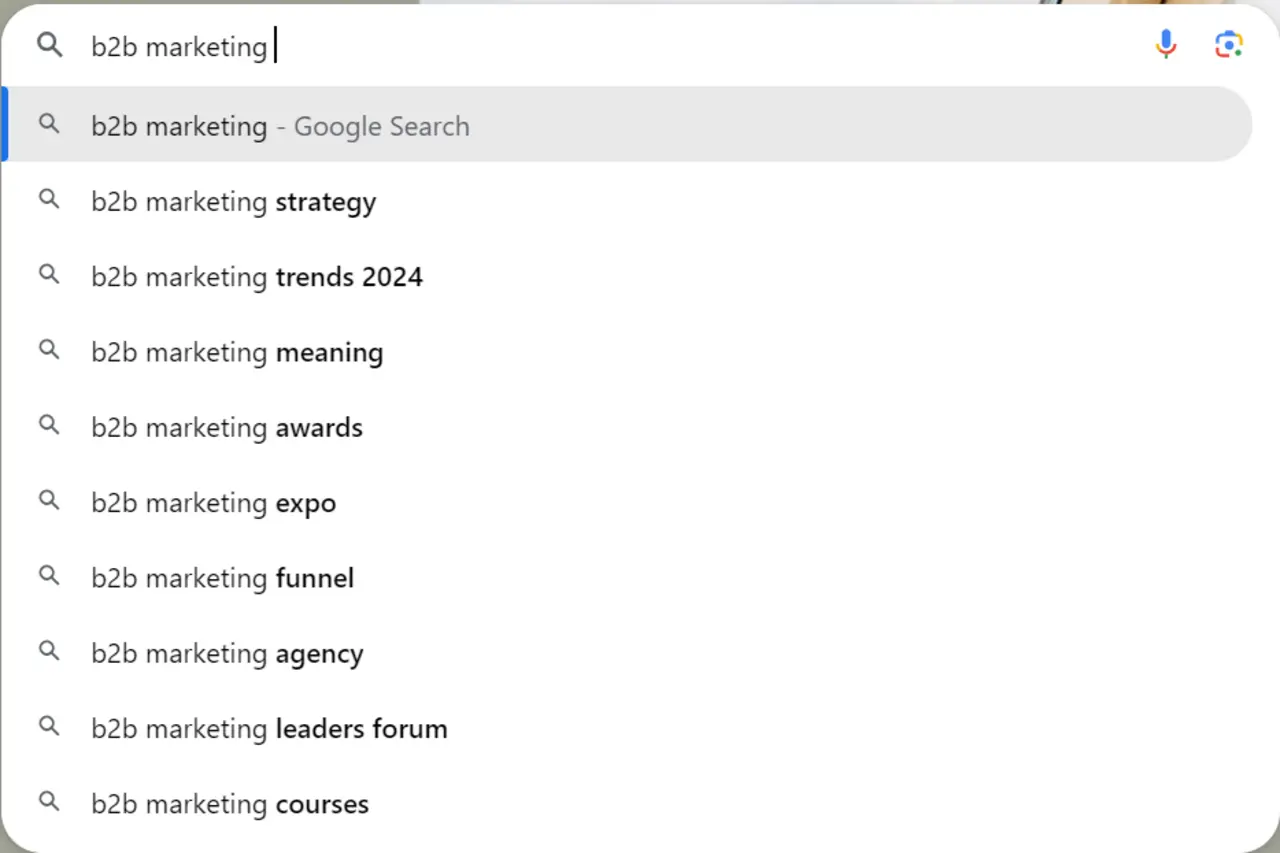
For example, when searching for “B2B marketing,” autocomplete suggestions reveal related secondary keywords. If “B2B marketing” is the primary keyword, suggestions like [B2B marketing strategy], [B2B marketing trends 2024], and [B2B marketing meaning] become secondary keywords.
Related and Additional Searches

Secondary keywords can also be identified through related and additional searches displayed on Google.
Synonym Searches
inding synonyms or related terms for your primary keyword involves strategic thinking, research tools, and an understanding of the keyword’s context.
To discover related secondary keywords, follow these steps:
- Clearly define your primary keyword.Understand its core meaning and context.
- Consider variations and potential synonyms.
- Use a dictionary to find alternative terms.
- Identify long-tail keywords that are specific variations, often including synonyms.
- Pay attention to language nuances and regional differences.
- Explore forums, social media, and user-generated content related to your niche to understand the language and terms your audience uses.
- Read industry publications and authoritative content to identify commonly used keywords and synonyms.
- Gather feedback from your audience through surveys or reviews to identify additional keywords and synonyms.
Tools like Google Keyword Planner, SEMrush, Ahrefs, or Ubersuggest can be useful for finding synonyms, variations, and commonly used terms.
How to Optimize Content with Primary Keywords and Secondary Keywords (On-page SEO)
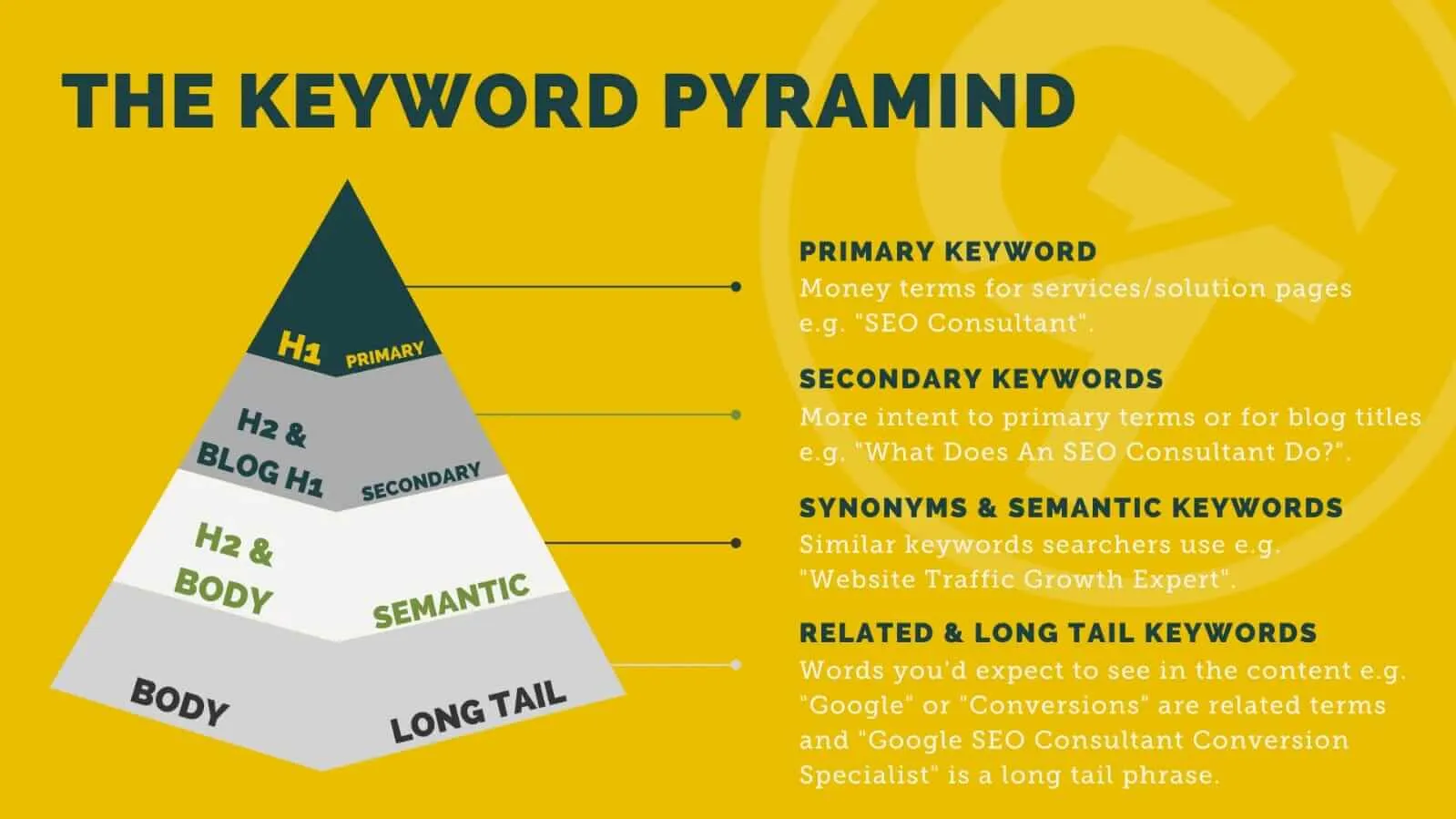
Even if you find the perfect primary keyword, it won’t rank well unless it’s integrated effectively into your content. To gain organic traffic, you need to create content based on search intent.
In this section, we’ll explain how to optimize content using Technical SEO or On-page SEO:
- Title Tags: Include the primary keyword in the title to make the topic clear to both users and search engines. Aim to place the keyword at the beginning of the title.
- First 100 Words: Use the primary keyword at least once in the first 100 words of your content to clarify the topic.
- H1, H2, H3 Tags: Include primary keywords in various headers to structure your content and build a hierarchy.
- Meta Description: Use primary keywords in the meta description to encourage users to click on your page when it appears in SERPs.
- Alt Text: Include primary keywords in the alt text of images to improve accessibility and rank higher in image search results.
- Video Content: Add the primary keyword to the video title, description, and tags to improve visibility on video search platforms.
Conclusion: Primary Keywords and Secondary Keywords are Key Elements in Marketing Strategy
In conclusion, appropriately using primary and secondary keywords is crucial for content marketing, SEO, performance marketing, and expanding website traffic. This requires careful and step-by-step planning.
First, choose the appropriate primary keyword and then find relevant secondary keywords based on it. Create high-quality content based on these keywords and incorporate them into your marketing strategy.
By doing this, you can achieve higher rankings in search engines, allowing more people to access your website. Therefore, continuous analysis and proactive management, including keeping up with the latest trends, are necessary.
Ultimately, the effective use of primary and secondary keywords is an essential requirement for successful online business operations.
